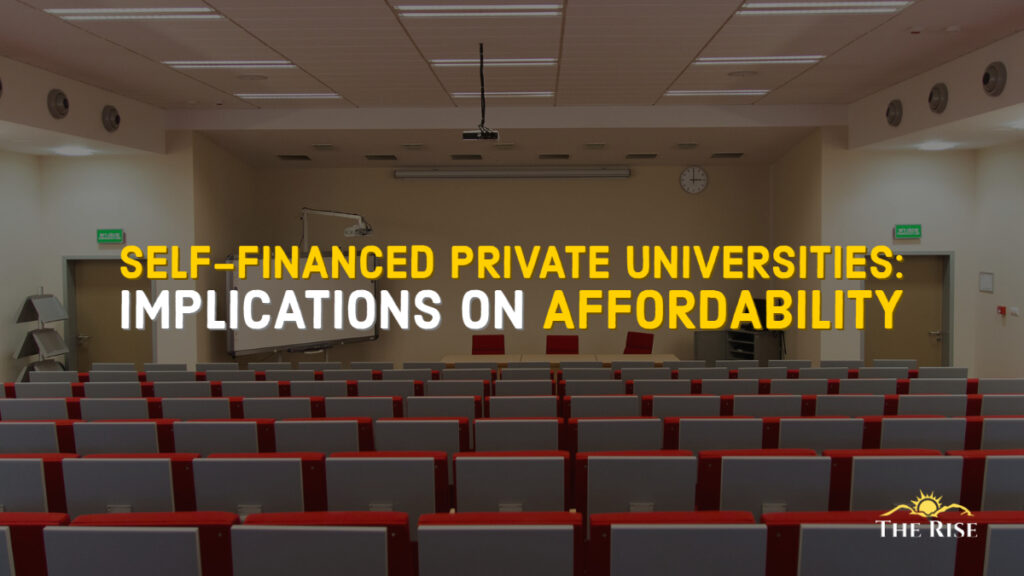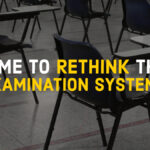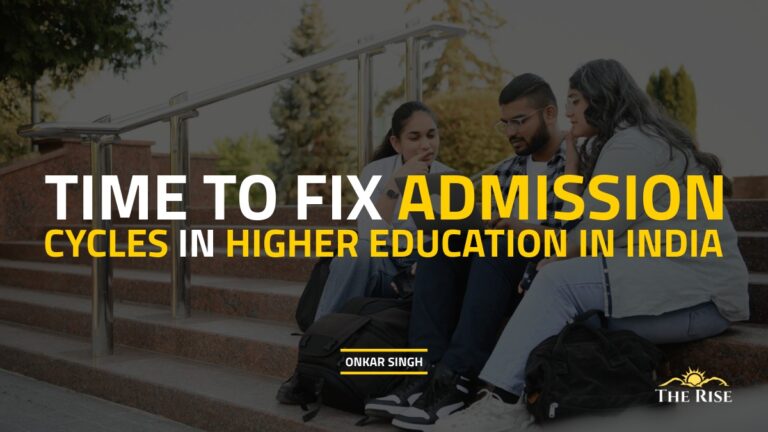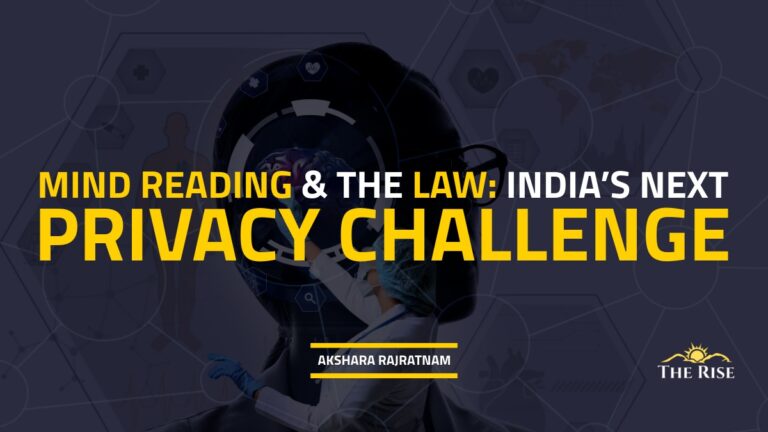Private higher education may have gained traction in the country since the mid-nineties, but it is as old as the history of modern higher education itself. Lately, ‘private tendencies’ have also been penetrating deep into the ‘public higher education’. The situation urgently calls for minimally invasive ways and means of ensuring affordable access to quality higher education for all segments of the society
National Education Policy targets to raise the Gross Enrolment Ratio (GER) in higher education from the present 27 percent to 50 percent by 2035. This amounts to increasing the enrolment from 38.5 million to 71.29 million over the next 15 years. In such a massive expansion, the private sector is expected to play a major role. The policy, therefore, promises to treat them at par with the public sector and to accord them autonomy, including the freedom to fix fees with the only rider that they shall remain public-spirited.
Private higher education may have gained traction in the country since the mid-nineties, but it is as old as the history of modern higher education itself. Meteoric expansion of higher education from 1882 to 1902 was propelled by ‘private enterprise’ such that by 1902, most colleges had become self-financed. In fact, by 1885 itself, the Universities of Calcutta and Madras, two of the first three universities established in 1857 had become entirely self-funded, while Bombay University received a meagre grant. The tendencies of commercialisation and revenue maximisation, too, had been rampant since the beginning. University Education Commission had observed, in 1948, that colleges guided solely by philanthropic considerations, too, indulged in reaping handsome fee revenue by admitting students beyond their capacity.
Also Read: Quality Education: A Luxury or A Fundamental Right?
Private higher education may have gained traction in the country since the mid-nineties, but it is as old as the history of modern higher education itself.
Since then, the nature and extent of private participation in higher education have undergone a sea change. Private participation has now spread across all states and disciplines, accounting for 60.01 percent of the institutions and 44.2 percent of the higher education enrolment. Most of the private higher educational institutions are in the state, whereas the central sector higher and technical educational institutions largely remain public-funded. Indian Institutes of Information Technology (IIITs) are an exception as they are established in Public-Private Partnership (PPP) mode and are mostly self-financed. The only other exception is the ‘deemed universities’, 64.50 percent of which are self-financed accounting for 87.8 percent of all enrolment in deemed universities.
Simultaneously, ‘private tendencies’ have also been penetrating deep into the ‘public higher education’. Pressure for ‘resource mobilisation’, emphasis on ‘resource-use efficiency’, measures for ’cost-reduction’, demand for ‘value-for-money’ and reducing ‘dependence on public exchequer’ to attain ‘financial self-sufficiency’ have compelled public higher educational institutions to resort to increased cost recovery and user charges, and mobilise resources through self-financing programmes and seats.
Also Read: In Defence of Higher Education
Until recently, all private higher educational institutions, barring the deemed universities, were colleges that worked under the regulatory regime of public-funded universities. Beginning this century, the ’self-financed private universities (SFPU)’, which the All India Survey of Higher Education (AISHE) refers to as ‘State Private Universities (SPU)’, have gained enormous popularity. The first initiative for establishing SFPUs came from the union government in 1995 with the introduction of the Private Universities (Establishment and Regulation) Bill in Rajya Sabha. Faced with the hurdle, it could not become a law and had to be withdrawn in 2007.
In the meantime, state governments realised that they had the power to establish private universities and took the lead. Chattisgarh, then a newly formed state, enacted an umbrella legislation in 2002 to permit SFPUs. It was such a roaring success that within a couple of years, as many as 112 SFPUs were established. The legislation was, however, quashed by the Supreme Court in 2005 on the ground that universities cannot be established by executive orders under an umbrella legislation and all these universities had to shut shop.
Also Read: Scrutinizing the appointment of Vice-Chancellors
This, however, was no deterrent for states as they soon overcame the technicalities and started establishing SFPUs, each under separate legislation. Soon, their numbers rose from 16 in 2007-08 to 327 in 2019-20. As of now, they account for 31.5 percent of universities and 15.68 percent of the total enrolment therein. However, in terms of total enrolment in higher education, they account for 3.31 percent only. Similarly, their share in the Gross Enrolment Ratio is as little as 0.90 percent as against the national average of 27.08 percent.
Self Financed Private Universities (SFPUs) are subject to stricter regulations from UGC as well as the state governments, most of which have lately set up.
Currently, there are 15.03 lakhs teachers in higher education, out of which 2.14 lakhs are in universities. SFPUs employ 4.46 percent and 31.28 percent of the total teachers in higher education and in universities respectively. Apparently, they maintain a favourable Student-Teacher-Ratio at 19.04 as compared to 25.64 in higher education and 37.97 in universities. This notwithstanding, most of them still lack quality as only 4 (or 1.22 percent) of them find a place in the top 100 NIRF list. Private deemed universities, in fact, do much better than them on this count.
Also Read: Anniversary of NEP 2020: Education needs intensive care
SFPUs suffer from many misgivings; they are accused of profiteering, crass commercialisation, and for running as a family fiefdom; they are censured for offering mostly high-demand professional or technical programmes so that they could attract a larger number of students and could charge higher fees, and they are indicted for creating infrastructure through borrowings which are serviced out of the revenue stream generated through student fees.
The reluctance of SFPUs to disclose their financials lends credence to such allegations. Consequently, they are subject to stricter regulations from UGC as well as the state governments, most of which have lately set up Regulatory Commissions or authorities to oversee SFPUs exclusively. Quality of higher education being inversely proportional to the intensity of regulation, such tighter regulations, rather than improving their quality, are, in fact, stifling their chances to attain quality and promote excellence.
Also Read: Excess Impedes Excellence: Empirical Evidence for Regulation in Higher Education
High-fee charging new-generation SFPUs are a reality and can not be wished away.
These high-fee charging new-generation SFPUs are a reality and can not be wished away. Given the policy push, they are bound to escalate in number and clouts. Ascending costs and descending quality of the public universities coupled with the ever-increasing demand for higher education would abate and accelerate the process further.
The situation urgently calls for minimally invasive ways and means of ensuring affordable access to quality higher education for all segments of the society, especially those, which NEP 2020 refers to as the Socio-Economic Deprived Groups (SEDGs).
Disclaimer: The views expressed in this article are of the author solely. TheRise.co.in neither endorses nor is responsible for them.
About the author
Dr. Furqan Qamar is a former professor of management at Jamia Millia Islamia and an education advisor in the Planning Commission, now NITI Aayog, is currently the Chief Advisor to the Chancellor at Integral University, Lucknow. He has been the former Vice-Chancellor of the University of Rajasthan and Central University of Himachal Pradesh and Secretary General of Association of Indian Universities..











The moot question is, what may be a workable model to strike balance between their motive of revenue maximization and need of affordable quality higher education with philanthropic consideration
Pingback: The Great Indian Distressful Examinations: An Introspection
Pingback: Private Participation in Higher Education - TheRise.co.in